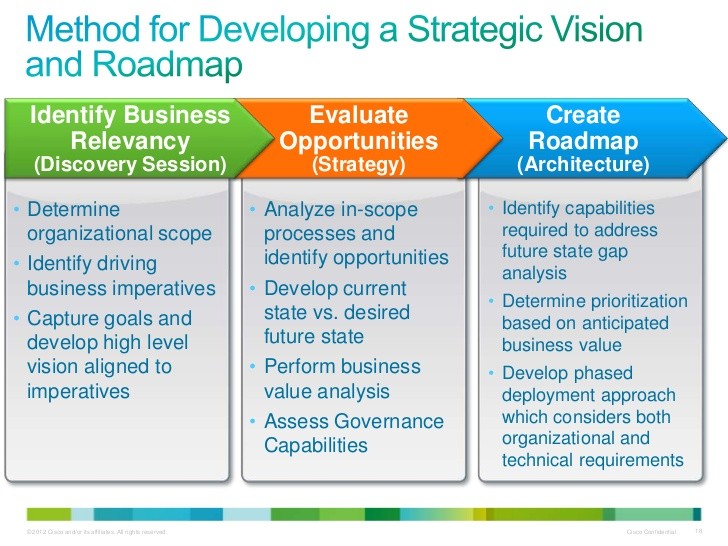How to Determine Your Business Investment Strategy
Post on: 28 Апрель, 2015 No Comment

The most successful companies are the ones that innovate.
Unfortunately, innovation often comes with a hefty price tag. ‘You have to build the capability to be innovative,’ says Michael Hitt, a professor of management at the Mays Business School at Texas A&M University, and co-author of Strategic Management: Competitiveness and Globalization. ‘Whatever is required in your particular industry or for your particular firm to be innovative, you have to invest in it and build it.’
That’s where your business investment strategy comes in. We’ve outlined steps to help you figure out where you need to invest to keep your business one step ahead of the competition.
Determining Your Business Investment Strategy: Set Long-Term Goals
Your business investment strategy is your plan for deciding how and what to invest in to meet your long-term goals. It’s a natural extension of the original company vision you outlined when you wrote your first business plan.
‘The first thing you need to do is ask yourself where you want to be five years out and what you’re doing to make that successful,’ says Dave Lavinksy, president of Los Angeles-based business development consulting firm Growthink. ‘Then you can reverse engineer from there.’
For instance, many entrepreneurs are building a company with the hope of one day selling it. If so, look at potential acquirers, Lavinksy says, and see why they would purchase your company. Is it because you have a great infrastructure? Creative employees? A strong brand name?
Knowing your long-term goals will help you decide where to invest your funds. For example, if you’re hoping to create a recognizable brand, your investment strategy will be heavily focused on ramping up your marketing department.
Determining Your Business Investment Strategy: Take Stock of Your Business
Of course, it’s difficult to plan for five years out without assessing where you currently stand.
‘Before you step out of the box into something else, you have to have a sustainable business in the market you’re currently in, because profits from your current business will finance your investment in future business opportunities,’ says Bill Warner, a managing partner at Paladin and Associates. a business development consulting firm based in Wake Forest, North Carolina.
This exercise entails more than just looking at your company’s financials. You need to examine your current marketing programs, Warner suggests, to see if you’re reaching potential customers, and your sales department, to see if you’re meeting closing goals. If these areas are not meeting your metrics for productivity, it’s a good sign that they should be a focus of your investment strategy.
Also consider your strengths and weaknesses as a company. If a particular revenue stream is strong, it’s a good indication that you should continue allocating funds to support it. However, if you find that a particular revenue stream is underperforming, but still costly, it might be time for a readjustment.
Determining Your Business Investment Strategy: Involve Your Customers
Setting an investment strategy doesn’t happen in a boardroom meeting just between company leaders. The customer should also be a key participant. (That doesn’t mean you should physically invite them into the boardroom; rather, you should solicit and include their input in your decision making.)
‘At the end of the day, your customers are geniuses,’ Lavinksy says. ‘They know exactly what they want. It’s a matter of spending time with customers to see how they interact with your products and services and what they like or dislike. It’s more than just doing a survey or focus groupsyou have to spend time with them to understand what’s driving their decision making.’
Determining Your Business Investment Strategy: Do Your Research
Conducting competitive research will also point you in the right direction when deciding on a business investment strategy. ‘Firms have to know their industry and know their competitors as well as they know themselves,’ Hitt says. ‘I don’t care how large or how small the company is. If they don’t do this and still do well, then it’s just luck.’
Keep a lookout for potential competitors, not just the companies already in your market. Take the example of Priceline.com, which, when it entered the marketplace, was the market leader in online airline ticket sales. However, the company failed to foresee potential new competitors, who were nimble enough to quickly imitate Priceline’s technology and provide value-added services such as rental car and hotel booking functions.
‘You have to know continuously what’s going on inside and outside of your industry to know what you have to do inside your firm to either sustain or obtain a competitive advantage,’ Hitt says. ‘Once you know how, then you can define the functions and capabilities inside the firm in which you have to invest.’
Determining Your Business Investment Strategy: Evaluate Your Options
Now that you have a sense of what works for your company and what it will take to sustain your competitive advantage, it’s time to consider how you will invest in the future.
The choice may not always be obvious. Solomon Choi knew that although his New York-based frozen yogurt retailer 16 Handles had just two locationsone in the East Village of Manhattan and one in Paramus, New Jerseyhe wanted the company to become the go-to frozen yogurt brand for New Yorkers. The problem? He lacked the capital and resources he needed to open multiple corporate stores in the pricey Manhattan real estate market.
Lucky for Choi, his original East Village store was a runaway success when it opened in July 2008, and multiple customers actually inquired about franchising opportunities. Even though 16 Handles was still a relatively young, small company, Choi looked into the possibility of franchising, and ultimately decided to invest in it as his growth strategy.
‘I didn’t expect necessarily that we would franchise so soon, but we really wanted to identify ourselves as a New York brand as opposed to just another frozen yogurt shop,’ Choi says. ‘Timing was crucialthere would be other brands trying to copy us. I didn’t want to lose out on the opportunity to expand, and how else could we at that point?’

There are a myriad of growth strategies you can invest in. Do you want to develop a new product that complements your existing product in the same category? Do you want to enter a new category in a new market? Do you want to expand territorially? Do you want to expand into a related business? Do you want to diversify and invest in many types of businesses? Do you want to pursue a merger or an acquisition?
Use caution, however, before jumping into new markets. ‘If I’ve spent all this money to get a product or service in this particular market, and there is a lot of potential left that I haven’t reached, expanding in the current market is the path of least resistance,’ Warner says. ‘Let’s expand in this current market over a period of time we’re comfortable with until it’s saturated, and then we have to pick the right time in the future to say we’ve gone far enough in this market.’
To find that right time, Lavinsky suggests defining a metric, such as market share or a revenue figure, that you want to achieve in your current market before entering new markets. ‘What is our real market potential in our existing market? I would want to be the dominant player before I considering expanding.’
Determining Your Business Investment Strategy: Align Your Resources
Whatever direction you choose, it’s critical that you support the initiative with the proper resources. More often than not, that means human resources.
‘If you want to be innovative, you have to have the human capital to do this,’ Hitt says. ‘New ideas are not created by artificial intelligence; they’re created by human intelligence.’
It’s tricky to set a strategy for when it’s time to add new staff, however. ‘The fact is, virtually all organizations are resource constrained,’ Lavinsky says. ‘You don’t have the finances to staff as much as you’d like, and a lot of time you don’t have a choice to add staff until after you need them. Still, I would rather have a backlog of customer orders rather than the opposite.
The flipside is even trickier. Your investment strategy should also indicate how you will reduce resources when times are tough. ‘The key question to understand is how much will it cost you to replace an employee,’ Lavinsky says, ‘especially if you have to replace that person in three months when customer demand returns.’
Whenever possible, Hitt recommends that small, new firms develop alliances with other companies, in and outside their industry, to collaborate on new ideas.
Determining Your Business Investment Strategy: Reassess Constantly
Ultimately, you can’t forecast when market conditions will change or how new technology will affect your existing market. (Look no further than the demise of Polaroid as a cautionary tale.)
As such, you can really never quite finish your business investment strategy. You have to tweak it as you go. ‘You’ve got to have some sort of process set up that regularly evaluates what you’re doing, where you are, and what you need to do,’ Hitt says. ‘You can’t just do this every year or every couple of yearsyou have to constantly be evaluating.’














